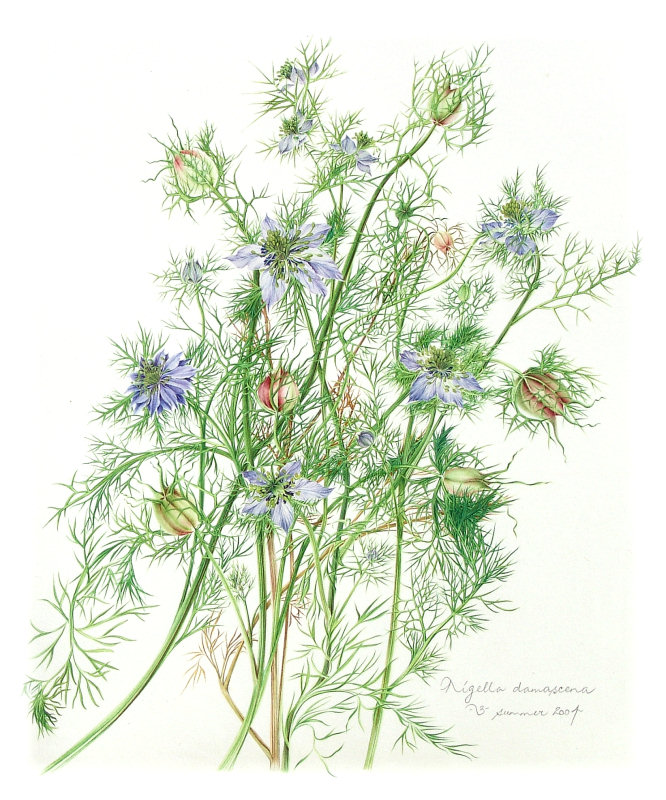Love-in-a-mist
2004

In Latin nigellus or niger, meaning black, refers to the color of the seeds; damascena denotes coming “from Damascus”. The plant’s feathery foliage guarding its dainty flowers has stirred the imagination to generate a host of popular names—Love-in-a-mist, Devil-in-the-Bush, Love-entangle, Hair-of-Venus, Jack-in-prison and Lady-in-Shade.
Legend tells a tale about the crusading Emperor Frederick I (1125-1190), who was enticed by a green-haired water sprite and drowned in pursuing her. The Lady-in-the-shade sprang up along the banks of the stream, its fine lacey foliage an enduring reminder of the femme fatale’s seductive tresses. Another folk name refers to the bright red seedpod, an inflated papery capsule composed of fused follicles which house numerous seeds. The seedpod terminates in tiny curved crescents resembling little horns on a head hiding within the spidery foliage, suggesting to popular imagination the Devil-in-the-Bush.
Native to southern Europe but also found in more northern latitudes as well as southwest Asia, north Africa and in gardens of North America, this member of the buttercup family seems to thrive on neglect. It resembles nigella sativa, a culinary herb the seeds of which are widely used in the cuisine of south and west Asia.
Although N. damascena is an annual plant, it self-seeds very obligingly, volunteers showing up in the spring in places where I did not expect to encounter them! They are always welcome because I find their tangled feathery foliage, complex floral structure, delicate appearance, sturdy endurance and dramatic seasonal changes to be a visual feast.